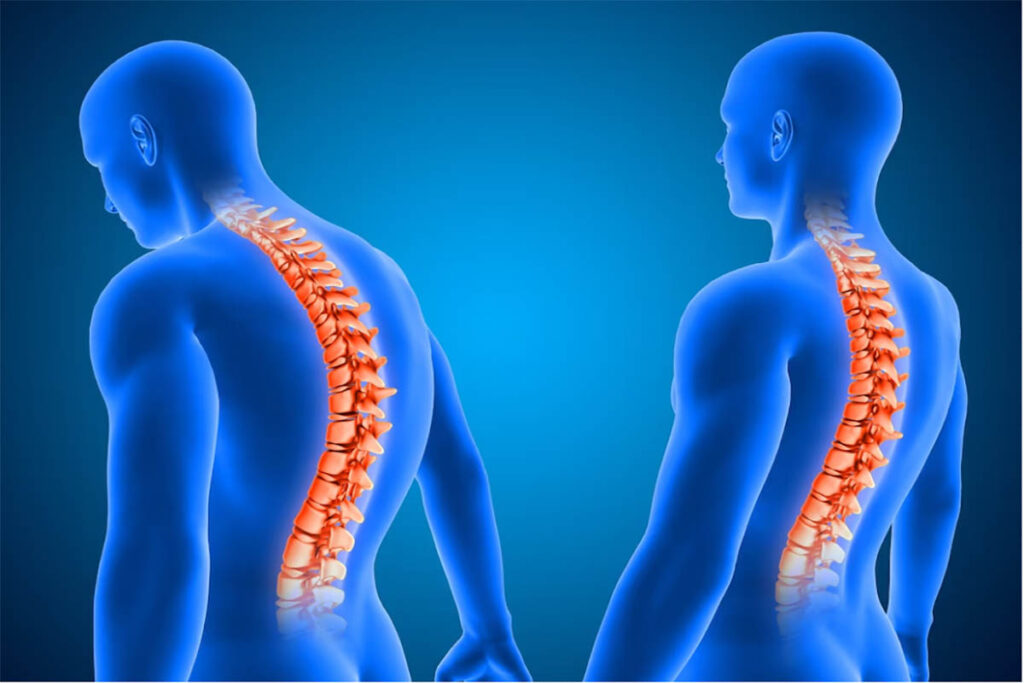Introduction
The back muscles play a crucial role in supporting the spine, maintaining posture, and facilitating movement. Composed of numerous interconnected muscles, the back is one of the most complex and powerful regions of the human body. Understanding the anatomy and function of the back muscles is essential for promoting proper posture, preventing injuries, and maximizing overall strength and flexibility. In this comprehensive article, we will explore the anatomy and function of the back muscles, highlight effective exercises for back strength, discuss common back injuries, and provide tips for maintaining a healthy back.
Section 1: Anatomy of the Back Muscles
The back muscles are divided into two main groups: the extrinsic muscles and the intrinsic muscles.
- Extrinsic Muscles: These muscles originate from the upper extremities and are involved in shoulder and arm movements. Key extrinsic muscles include the trapezius, latissimus dorsi, and rhomboids.
- Intrinsic Muscles: These muscles originate and insert within the back region, supporting the spine and contributing to movements of the vertebral column. The intrinsic back muscles can be further divided into three layers: superficial, intermediate, and deep.
- Superficial Layer: Includes the trapezius, which extends from the neck to the upper back, and the latissimus dorsi, which spans from the lower back to the armpit region.
- Intermediate Layer: Contains the erector spinae group, consisting of the iliocostalis, longissimus, and spinalis muscles. These muscles run along the length of the spine, providing support and allowing for extension and lateral flexion of the spine.
- Deep Layer: Includes the transversospinalis group, comprising the semispinalis, multifidus, and rotatores muscles. These muscles run diagonally along the spine and are essential for stabilizing and facilitating fine movements of individual vertebrae.
Section 2: Function of the Back Muscles
The back muscles serve multiple critical functions:
- Postural Support: The back muscles play a significant role in maintaining upright posture and spinal alignment. They counteract the force of gravity to prevent slouching and excessive curvature of the spine.
- Spinal Stability: The intrinsic back muscles work together to stabilize the vertebral column, providing support and preventing excessive movement that could lead to injury.
- Movements of the Spine: The back muscles enable a range of movements of the spine, including extension, flexion, lateral flexion, and rotation.
- Upper Extremity Movement: Extrinsic back muscles contribute to movements of the shoulder and arm, such as raising the arms overhead or pulling objects towards the body.
Section 3: Exercises for Strengthening the Back Muscles

Strengthening the back muscles is essential for maintaining a healthy spine and preventing back pain. Here are some effective exercises for back strength:
- Deadlifts: A compound exercise that targets the erector spinae, glutes, and hamstrings, deadlifts are excellent for overall back strength.
- Pull-Ups/Chin-Ups: These bodyweight exercises engage the latissimus dorsi and the muscles of the upper back, promoting upper body strength.
- Rows: Bent-over rows, seated rows, and cable rows are effective in targeting the rhomboids, trapezius, and latissimus dorsi.
- Superman Pose: This yoga-inspired exercise strengthens the lower back muscles and improves spinal extension.
- Bird-Dog: An excellent exercise for core stability and back strength, bird-dog involves extending one arm and the opposite leg simultaneously while keeping the back stable.
- Back Extensions: Performed on a back extension machine or on the floor, back extensions target the erector spinae muscles and promote lower back strength.
- Bridge Pose: A yoga pose that engages the glutes, hamstrings, and lower back, improving core stability and back strength.
Section 4: Common Back Injuries
Despite their strength, the back muscles are susceptible to injuries and strains, especially when subjected to excessive stress or improper movements. Some common back injuries include:
- Muscle Strains: Overstretching or tearing of the back muscles due to sudden movements or improper lifting techniques.
- Herniated Disc: Also known as a slipped or ruptured disc, this condition occurs when the gel-like center of a spinal disc protrudes through a tear in the outer layer, putting pressure on nearby nerves.
- Sciatica: Compression or irritation of the sciatic nerve, which runs from the lower back down through the legs, leading to pain, tingling, and numbness.
- Scoliosis: Abnormal lateral curvature of the spine, often occurring during adolescence and leading to uneven muscle distribution in the back.
- Spinal Stenosis: A narrowing of the spinal canal, causing compression of the spinal cord or nerves and resulting in pain and weakness.
Section 5: Diagnosis and Treatment of Back Injuries

Diagnosing back injuries typically involves a combination of:
- Medical History: The healthcare professional will inquire about the patient’s symptoms, medical history, and any recent injuries or activities that may have triggered the pain.
- Physical Examination: A thorough examination of the back, assessing range of motion, strength, and areas of tenderness.
- Imaging Studies: X-rays, MRI, or CT scans may be conducted to visualize the spine’s internal structures and detect any abnormalities or injuries.
Treatment options for back injuries may include:
- Rest: Adequate rest is essential to allow the back muscles to heal and recover.
- Ice and Heat Therapy: Applying ice packs to reduce inflammation in the acute phase, followed by heat therapy to promote blood flow and healing.
- Pain Medication: Over-the-counter pain relievers or prescription medications to manage pain and inflammation.
- Physical Therapy: Specific exercises and stretches designed to strengthen the back muscles, improve flexibility, and address imbalances.
- Manual Therapy: Techniques like massage, chiropractic adjustments, or osteopathic manipulations can help relieve muscle tension and improve spinal alignment.
- Injections: Corticosteroid injections may be used for targeted pain relief in cases of severe inflammation.
- Surgery: In severe cases of back injury, surgery may be necessary to repair damaged structures or stabilize the spine.
Section 6: Preventive Measures for Back Health
Preventing back injuries involves adopting healthy habits and practices:
- Proper Lifting Technique: When lifting heavy objects, use your legs and keep your back straight to avoid straining the back muscles.
- Core Strengthening: A strong core provides support for the spine, reducing the risk of back injuries.
- Maintain Good Posture: Be mindful of maintaining proper posture while sitting, standing, and walking.
- Regular Exercise: Engage in regular physical activity to keep the back muscles strong and flexible.
- Ergonomic Support: Ensure proper ergonomics at workstations and when using electronic devices to avoid unnecessary strain on the back.
Conclusion
The back muscles are instrumental in maintaining spinal stability, supporting posture, and enabling various movements of the vertebral column. Understanding the anatomy, function, and importance of the back muscles is essential for promoting back health and preventing injuries. Regular back-strengthening exercises, proper lifting techniques, and maintaining good posture are all crucial in preserving the health and integrity of the back.


